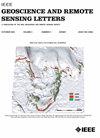基于复值Pix2pixHD网络的离焦ISAR图像高分辨率重聚焦
IF 4
3区 地球科学
Q2 ENGINEERING, ELECTRICAL & ELECTRONIC
引用次数: 3
摘要
逆合成孔径雷达(ISAR)是一种有效的目标探测方法。然而,对于机动目标,目标上任意散射体诱导的多普勒频率是时变的,会导致ISAR图像离焦,给进一步识别带来困难。传统方法很难将所有位置重新聚焦到目标井上。近年来,生成对抗网络(GANs)在图像翻译领域取得了巨大的成功。然而,目前的重聚焦模型忽略了包含在数据实部和虚部关系中的高阶项信息。为此,提出了一个端到端重聚焦网络,命名为复值pix2pixHD (CVPHD),该网络利用复值(CV) ISAR图像作为输入,学习从离焦到聚焦的映射。利用CV实例归一化层,通过计算复杂部分的协方差来挖掘复杂部分之间的深层关系,加快训练速度。随后,提出了一种创新的自适应加权损失函数,以提高整体重聚焦效果。最后,利用仿真数据集和真实数据集对所提出的CVPHD进行了测试,两者都能获得较好的再聚焦结果。对比实验结果表明,将pix2pixHD网络扩展到CV域可以减小自动调焦误差,并且CVPHD的调焦效果优于其他自动调焦方法。代码和数据集已在网上(https://github.com/yhx-hit/CVPHD)提供。本文章由计算机程序翻译,如有差异,请以英文原文为准。
High-Resolution Refocusing for Defocused ISAR Images by Complex-Valued Pix2pixHD Network
Inverse synthetic aperture radar (ISAR) is an effective detection method for targets. However, for the maneuvering targets, the Doppler frequency induced by an arbitrary scatterer on the target is time-varying, which will cause defocus on ISAR images and bring difficulties for the further recognition process. It is hard for traditional methods to well refocus all positions on the target well. In recent years, generative adversarial networks (GANs) achieve great success in image translation. However, the current refocusing models ignore the information of high-order terms containing in the relationship between real and imaginary parts of the data. To this end, an end-to-end refocusing network, named complex-valued pix2pixHD (CVPHD), is proposed to learn the mapping from defocus to focus, which utilizes complex-valued (CV) ISAR images as an input. A CV instance normalization layer is applied to mine the deep relationship between the complex parts by calculating the covariance of them and accelerate the training. Subsequently, an innovative adaptively weighted loss function is put forward to improve the overall refocusing effect. Finally, the proposed CVPHD is tested with the simulated and real dataset, and both can get well-refocused results. The results of comparative experiments show that the refocusing error can be reduced if extending the pix2pixHD network to the CV domain and the performance of CVPHD surpasses other autofocus methods in refocusing effects. The code and dataset have been available online (https://github.com/yhx-hit/CVPHD).
求助全文
通过发布文献求助,成功后即可免费获取论文全文。
去求助
来源期刊

IEEE Geoscience and Remote Sensing Letters
工程技术-地球化学与地球物理
CiteScore
7.60
自引率
12.50%
发文量
1113
审稿时长
3.4 months
期刊介绍:
IEEE Geoscience and Remote Sensing Letters (GRSL) is a monthly publication for short papers (maximum length 5 pages) addressing new ideas and formative concepts in remote sensing as well as important new and timely results and concepts. Papers should relate to the theory, concepts and techniques of science and engineering as applied to sensing the earth, oceans, atmosphere, and space, and the processing, interpretation, and dissemination of this information. The technical content of papers must be both new and significant. Experimental data must be complete and include sufficient description of experimental apparatus, methods, and relevant experimental conditions. GRSL encourages the incorporation of "extended objects" or "multimedia" such as animations to enhance the shorter papers.
 求助内容:
求助内容: 应助结果提醒方式:
应助结果提醒方式:


